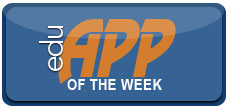In preparing for my own dissertation research, I began getting electronic copies of journal articles so that I would not be burdened with lots of paper copies and for better file organization. I also did not want to read the copies while sitting at my computer but to use my iPad instead. While reading any journal article there is a need to markup the copy with personal notes, highlights, underlines, and other helpful markings so I needed a program that would allow me to do that on my mobile device.
A colleague pointed me to Goodreader for the iPad. This app is incredible for working with PDF documents. Using the app, I was able to highlight a document, underline, add squiggly lines, all using multiple colors. I also could add my personal notes at any point in the document. Goodreader allows me to connect to various server types like Dropbox, Google Drive, and SugarSync so I am able to store files in folders on those drives. I then bring the files down onto the iPad in the same folder structure. Goodreader also can sync documents with the server so if you are reading in multiple places or devices, you will be using the most current version.
After I have completely marked up a journal article, Goodreader can email a summary of the annotations along with the article, just the annotations or just the file. I chose to send myself a copy of the annotations, which appears in the body of the email. Each annotation is marked according (example: Highlight (yellow) [date] [author making annotation]: [annotated copy]) by page. The subject line and first line of the email provide the document title. I discovered it is best to provide the article title for the name of the document although one could use the author instead.
 An article marked up with Goodreader. |
Once I have the email, I copy the information into a Google document. I can then use Google Research feature, which is part of the “Tools” palette, to get a full citation in MLA, APA or Chicago style using Google Scholar search. What I am left with is a document with complete, correct citation and notes from the journal article that I did not have to type manually. This has saved me countless amounts of time to focus on writing my research instead of gathering information for my research. If I want to quote from a particular article, the quote is in my notes along with the citation information that I can plug into my document (either using Google Docs or Microsoft Word).
But what about books? Although not all books are available electronically nor will be purchased for your research, I have a few that I purchased through Amazon. Again, using my iPad, I read the books using the Kindle Reader app, highlighting and placing notes as I read. Once I completed my reading and wanted to get my notes out of the app, I went to the Kindle page for my device, found the book and looked at the annotations I had made, which is displayed on one page. I then highlighted all the notes and copied them into the Google document I had started for my research notes from above. I have not found a similar workflow for other electronic book readers.
One drawback to using this process is you are given the Kindle location instead of a page number. If you view your annotations in the Kindle desktop app, you will see the page number on which the annotation appears. Also, you cannot color code annotations in the Kindle app so this information would need to be added later. Unfortunately, Goodreader does not allow markup of other types of files such as Word documents. You can read the files but you cannot annotate, which is not helpful for most researchers and professors.
Using this process, one could use a color scheme for note-taking on articles such as yellow=quote, red=citation, green=results, etc., so that those notes could be grouped together in your notes or simply recolored in the document for easy location. This workflow leverages technology to the fullest and allows the researcher to focus more time on one’s own research instead of trying to keep track of the information undergirding that research. This also could help research become stronger by not missing or misplacing data from other relevant research. As technology continues to improve, this type of workflow will get easier and easier.
Jonathan Messer is a Ph.D. candidate at the College of William and Mary and an Academic Technology Consultant at the University of Richmond.

